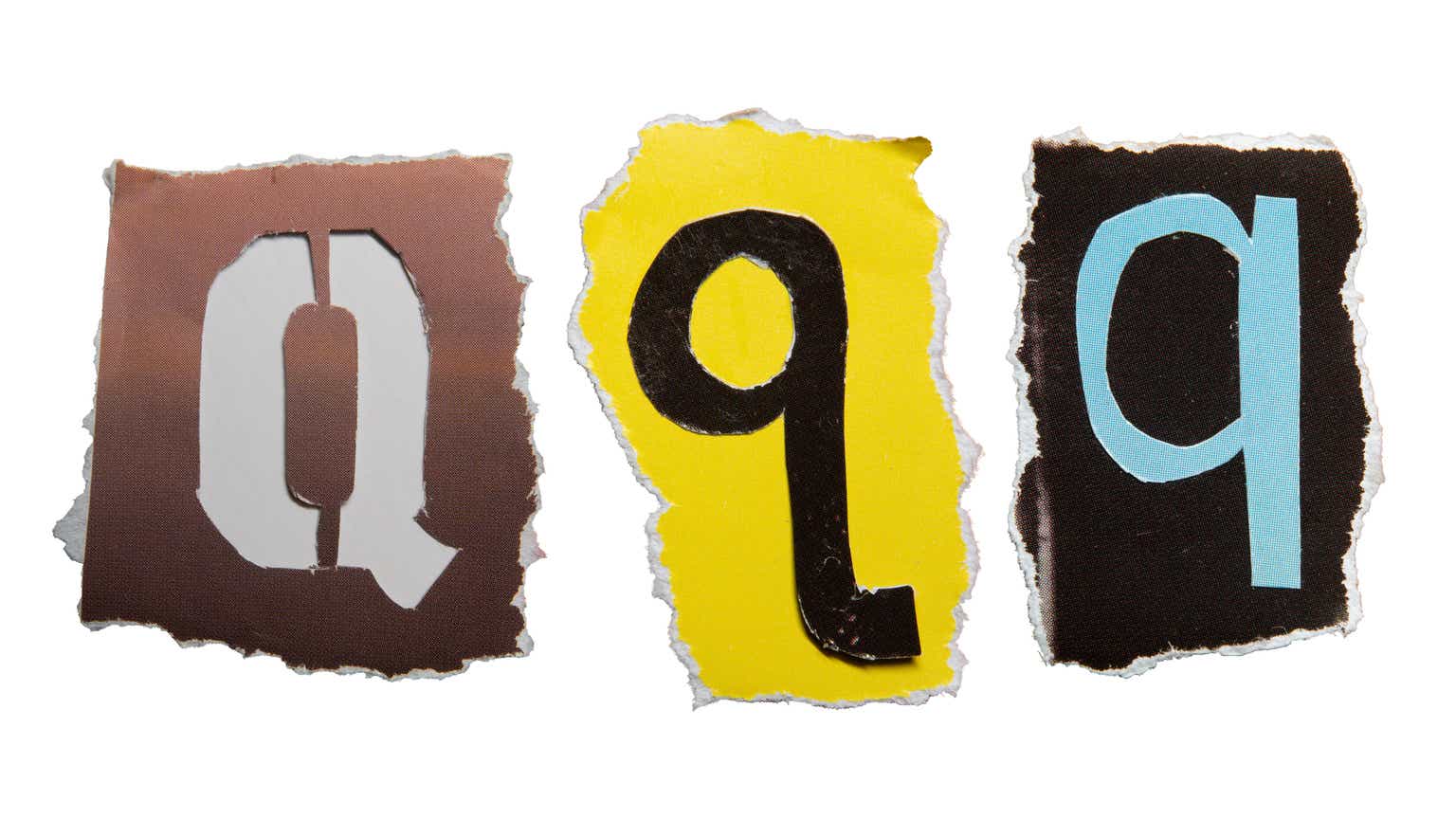Listen here or on the go via Apple Podcasts and Spotify
Alex King runs the Investing Group, Growth Investor Pro and discusses hedging the (NASDAQ:QQQ), an especially helpful strategy for volatile times (0:30). Recognize patterns, find a charting method, like Elliot Wave and Fibonacci (3:40). Brokers make a huge difference (5:50). Practical example of hedging (9:00). Leveraged ETF options (13:00). This is an excerpt from Hedging Bets in Tech, published here with video and slides.
Find out more about Growth Investor Pro
Transcript
Chris Ciaccia: Joining me today is Alex King, Investing Group Leader, Growth Investor Pro.
Alex King: Thanks, Chris.
Coming out of a bear market, all of us can choose obvious candidates for stocks that should do well.
We pick the strongest companies with the most beat-up prices, and we can say, well, there’s a good chance that goes up as the market recovers. And if you’ve been investing and trading for a while, there’s a good chance you’ll get that right.
Coming out of the ’22 bear market, we in our service at Seeking Alpha, Growth Investor Pro, we picked a whole bunch of those. We did really well with them, NVIDIA (NVDA), Meta Platforms (META), Microsoft (MSFT), a whole bunch of these names. And we’ve had a great run up.
Question though is, what now? 2025, I think it’s going to be a bit different. I think it’s going to be an okay year for the market. I suspect it will be probably up at the year-end compared to the start of the year probably, but I think along the way, we’re going to see quite a bit of volatility.
And that volatility can scare people out of markets. It can chop up option strategies. It can chop up levered ETFs. It can be really challenging to play, and it can also be emotionally draining, whilst taking your account pretty much nowhere.
So what I wanted to talk to you today about is a little bit of a different approach. Rather than picking this stock or that stock, and I’m not saying that can’t work, of course it can, but something that I do myself when in volatile times, and also we teach, and we do in real-time in the Growth Investor Pro Service is hedging.
Learning to hedge the (QQQ). And this method works with (SPY). It works with plenty of other things, but QQQ is a great example. It’s a volatile security at the best of times. It’s very liquid as you know, the QQQ ETF, and it has an inverse. And we’ll come on in a moment to why that matters, (NYSEARCA:PSQ).
So broadly, if the NASDAQ 100 moves up 1% in a day, the QQQ will move up 1% that day. If the NASDAQ 100 moves down 1% in a day, the QQQ will move down 1% of the day. We’re going to talk shortly about PSQ, which is the inverse.
And in the case of PSQ, if the NASDAQ 100 moves up 1%, the PSQ will move down 1% and vice versa. NASDAQ down, PSQ up, and we’ll talk about why that matters.
If you’re going to hedge QQQ, you can use this in any market. Rip-roaring, bull market, terrible bear market, volatile market doesn’t matter, but it’s particularly useful in times of volatility.
Here are some things, first of all, that you do not need to know in order to do this. You don’t need to know about QQQ, the following things. What stocks are in it? Doesn’t matter. All you need to know is it’s liquid. What P/E it trades at? It doesn’t matter. We’re not even going to consider that.
It doesn’t matter whether Hedge Fund A, Hedge Fund B, some guy on Twitter owns it or is selling it or used to own it, doesn’t matter. It doesn’t matter what Jerome Powell said at his last press conference. It doesn’t matter what President Trump might say on the socials tomorrow. It doesn’t matter what inflation is. It doesn’t matter what oil is. It doesn’t matter what the yield is. And anything else you can think of that is supposed to matter, it doesn’t matter.
The only thing that matters is price. And to track price and get good at tracking price, the main thing you have to do is learn a charting method.
Now, there are lots of charting methods that are good. The one I use, and we use in our business, is the combination of Elliot Waves and Fibonaccis, but it doesn’t matter. Just find one that works for you.
One that works for you is where you develop an instinctive understanding of how price moves within the chart system. All any charting system is doing is giving you templates to do pattern recognition. To say, well, if this happens, then based on the last 100 years of history or 20 years of history or whatever it might be, then the probable next move over the time frame I’m interested is this.
And that’s what every chart pattern does. And everything you see bandied around about technical analysis, bull flag, bear flag, head and shoulders, wave 3, all of this, they’re just pattern recognition.
They’re saying, well, this is what happened in price in the preceding period. And then probably in my pattern recognition system, here’s what may happen in price next. That’s all the charting system is.
It’s important, as we’ll see later on, to learn one that’s common. And the reason is because large asset managers, large institutional investors, do use pattern recognition. And they use it because it works, and it works because they use it. It’s circular.
Price setting investors, which is to say people who move so much money around that they set the price in the NASDAQ and the S&P, they trade to technical systems. You can see it because the systems work. They don’t work perfectly. They’re subject to measurement error, interpretation error, all of those things. But by and large, if you can learn to trade to a chart, you’ll do much better than just trying to trade to fundamentals or macro or anything like that.
And the reason is because large institutional investors use these systems. And really, all technical trading is, and that’s what we’re going to talk about in a moment is, you’re learning to spot the breadcrumbs of where big money has been. And you’re learning to follow around where big money has just been a moment ago, knowing that they don’t do anything quickly. They can’t, that’s too much money. And so, you can follow just a little bit behind and do really, really well, never ever get in front, never get in front, always trade behind, always follow the patterns, always follow price.
Next point, sounds like a non-point, but isn’t. There are a lot of brokers around today. And my experience is, and I’ve gained this both personally and talking to our subscribers over the years.
It makes a huge difference which broker you are with. In times of volatility, poorer quality brokers tend to close the door. Now you saw this most recently on the August 4th, 5th episode when there was big, big volatility in the market, a big sell-off overnight in the futures market on Sunday, August 5th. Uncertainty are open on 5th and on a Monday and a rip up in equities that day. An awful lot of people could not access their brokerage accounts at that time. And it’s happened time and time again, and it’s always the same brokers.
We have no affiliation with any brokers. And when I say this, it’s not as any recommendation. We don’t get compensated for it, but I happen to use Interactive Brokers. Never had a problem at all. And so, whenever you choose your brokerage, choose one that didn’t shut down in times of volatility because times of volatility are where you either need to protect your capital or it’s an opportunity to make some money. If you can’t access your account, that’s a problem.
The dawn of free trading zero commission, I believe, is unhelpful by and large to grown-up investors. It means that your broker is making money by selling your trade data, basically, to market makers. And it also means that your account is more likely to not be accessible during those times because they tend to be lower quality.
So if your broker charges relatively high fees, data fees, trade fees, commissions, subscription fees, all of that, that can be okay. You want one that has the uptime, you want one that has liquidity and round the clock liquidity. So you want, in pre-market and post-market hours, plenty of liquidity in things like QQQ and PSQ.
Setting your account up correctly can really help. Hedging means that at short notice, you might need to match all of your long position in QQQ with a position in PSQ, a short position. That means you’ve doubled your capital exposure. Well, you probably want to consider using a margin account for that because otherwise, you have to keep an awful lot of money in cash.
That’s not efficient. Some brokers will allow you to set up something called a portfolio margin account. Now, that’s not a Regulation T margin account. It’s a portfolio margin account. It’s different.
What that means is, that the broker considers your overall credit risk to them based on what you own. So, if you own, let’s say, half of your account in QQQ and half of your account in PSQ, your credit risk to your broker is almost zero.
Why? Because if the NASDAQ goes up, your account won’t change. And if the NASDAQ goes down, your account won’t change. If the NASDAQ goes up, a long part goes up, short down, vice versa. Your broker loves this because your broker can charge your interest on both sides if you’ve drawn a margin facility, but their credit risk is zero.
So brokers like portfolio margin accounts. What it gives you is, lots of headroom to draw and be able to use to hedge without having to keep a whole ton of cash on the side. It’s not suitable for everybody. Take a look at it. Take legal or financial advice before you do something like this, talk to your broker, but consider it.
We are going to look at a practical example now of what I mean by this. Now, an Elliott Wave pattern. It’s a 5 wave up pattern, it’s approximately the sort of moves up and down you would see in a typical five wave up pattern.
And so, this is basically the market moves up off a low. It pulls back a bit. It moves up a lot. It pulls back a bit. It moves up a bit more. Okay, that’s the end. And at the end of this, it will sell off a lot.
So how would you do this method? Well, at trade point zero. So this is where you determine the market is at a low. Let’s say we’re coming out of a bear market, or we’ve had a bad couple of weeks and things look like they’re bumping along the lows.
QQQ is sort of testing a particular level, won’t go below it. Volume is starting to pick up. Looks like there’s buying, okay? You buy a position in QQQ. Let’s say I’m going to say one unit of QQQ. A unit could be a $1000 or $10,000 or $10 million or a $100 million, doesn’t matter what it is. It’s just an amount of capital. You buy one unit of QQQ here.
When you hit this, let’s call it a Wave 1 high, a local high when the market starts to roll over. If you could perfectly judge when that top was, you’d say, “Well, look, I’m now going to hedge. I’m going to buy one unit of PSQ.” So, at this point up here, I’ve got equal amounts of QQQ and PSQ. I’m perfectly hedged here.
So as the market falls, my account doesn’t change. What’s in the red and what’s in the green changes. So, the QQQ I’ve got will obviously decline in value, but the PSQ will go up.
Now, again, if you could perfectly and again, this is an ideal plan. If you could perfectly determine when this wave 2 low was, you could then sell all of the PSQ for profit. When you bought this PSQ, this short, this inverse index ETF up here, and you could sell it down here and realize some profit.
And you could take that profit, and you could say, “Well, look, this is free money that the market has given me.” It wouldn’t have given me this if I didn’t know how to hedge, but luckily, I do know how to hedge. So, I got this free money, and I’m going to use that to buy additional units of QQQ down here at this local low.
And now I’m going to sit back while we run into this Wave 3 up. And at the top of this, and all the way up here, I only own QQQ. Up here, I’m going to say, right, market is topping out again. I think we’re going to see some weakness.
Again, remember, this is an idealized plan. No one is this good, but you can get quite good if you practice.
I’m going to buy PSQ again. I’m going to hedge. I’m going to have an equal capital amount of QQQ and PSQ up here. As the market falls, my QQQ will go down, but my PSQ will go up. And again, in a perfect world, you go, that’s it. We’re done now.
That was the sell-off. I’m going to sell PSQ and take a profit by QQQ. I’m going to ride it up for this last move up in the cycle with this Wave 5 high, and I’m going to sell QQQ.
And therefore, I’ve made a lot more money than if I just bought QQQ down here and sold it up here. Because I got to generate some free money on the way down here and then roll-in, start to compound that free money up here. I mentioned earlier, this is a different method of compounding.
I would have bought the PSQ again up here, sold it down here, rolled it into the long, re-compounded that and taken the free money that the market offered me here and here and compound into my loss. And if you get even half good at that, and no one is perfect, of course not, it’s difficult.
If you get even half good at that, it can really transform your investing performance, not least because that’s how it works in a bull cycle. It’s exactly the same in a bear cycle. You’ve just done the whole thing on your head.
Let’s say we put in new all-time highs. QQQ hit the 522 level, for instance, and it sold off. You owe nothing at this point in this idealized plan, and it’s just in reverse. You buy PSQ here, market sells off, PSQ becomes more valuable.
Buy QQQ down here, sell it up here, write PSQ down here, buy QQQ here, sell it here, sell everything down here. So it doesn’t matter if you learn this method whether the market is going up or down. The method works either which way.
I’ve used the example here of QQQ on the long and PSQ on the short. There are many others. In the S&P, you could use SPY for the long and (SH) for the short.
If you get good at this, you could use the leveraged ETFs. So, you could use, for example, (TQQQ) for the long, which is a 3x daily NASDAQ ETF, and you could use (SQQQ) for the short. If you get really, really good at it, and you like volatility, and you practiced, and you know your stuff, you could use (SOXL) on the long. That’s 3x long, the Philadelphia SOX semiconductor index. And you could use (SOXS) for the short, that’s the inverse.
There are lots of ways to do it. This method works if and only if you have very liquid ETFs at your disposal. So what I mean by that is, you want large asset under management ETFs, and you want things that trade with close bid-ask spreads even in difficult times, even when the market is thin and there’s not much being traded, and outside of real-time, regular trading hours.
That’s really important. It’s a very useful trick to be able to trade when large institutions can’t. And generally speaking, large institutions only trade during regular trading hours because the volumes are too small outside of those.
The Elliott Wave and Fibonacci method, it’s one of a number of methods. The moves aren’t random. They usually correspond to certain so-called extensions on the way up and retracements on the way down, and they’re just measurements. And just like we can measure anything, you can measure stock price movements relative to each other, and you can learn patterns.
We won’t get into that now. We teach it in our service all day long, but this stuff is teachable. I myself, my background, before I started investing my own capital in public markets, was in venture capital and private equity.
There is no technical analysis in those things. It’s private securities. They’re not publicly traded. There is no technical analysis, entirely fundamentally driven. And I started life as a public market investor, as a pure fundamentalist.
And these days, yeah, fundamentals are important, but they’re dominated in my own investing and trading and in our service by technicals. And since I’ve done that, I’ve become a far, far better public market investor and trader.
If you want to get really, really, really good at this, if you want to master the craft, there are a few points that I can suggest.
The first one is, do I call take the Red Pill? Most of you would have seen the Matrix movie. You can only take the Red Pill once. The Red Pill means, take the wool out from the front of your eyes. Stop believing that stock prices are driven by earnings, or fashion, or something called sentiment, or whatever the yield happens to be, or what inflation happens to be, or stop believing that stock prices have any linear relationship to any external stimuli.
Stock prices are formed as an internal endogenous reaction to what that stock price was a minute ago, five minutes ago, 10 minutes ago, a year ago, 10 years ago. It’s an entirely internal closed system. And once you take that Red Pill, and it does take a bit of doing, and I speak as a trained fundamentalist, does take a bit of doing, then your mind is truly free. And then you can see stock prices for how they really are, not how they appear to be. That’s the most important thing I can suggest anybody does.
The next thing is learn to OVERhedge. What does OVERhedge means? It means that if you’re doing this, let’s say, you thought there was going to be a market correction, you added a short, but you were wrong. The market keeps going up. When you could just sit there and do nothing, or you could say, “Well, I need to add more long. I need to OVERhedge to the long, and therefore, my account still going, still keep going up.” And then when it finally turns over, I can trim that position.
So, this is a really difficult thing to do, but this is a mastery point, Learn to OVERhedge, manage position sizes. A great way to ruin this is have too much exposure. What is it that kills all bull markets pretty much? It’s leverage, exposure, and leverage. Too much cash written into the market with too much leverage. Why is it that everyone has a meltdown when Bitcoin drops from a 100,000 to 90,000? Answer, leverage.
Why is it that you get this crazy level of liquidation in crypto or options, whatever it might be, whenever the market sneezes? Answer, leverage. If you keep your position sizes modest, if you manage your leverage, your margin draw if you use it, then you’re never over your skis. If you got something wrong, you can always hedge. And when you hedge, what you do is you suspend time. And when you suspend time, you give yourself time to sit back and calmly think about what to do next. If you’re overexposed, if you’re over levered, you can’t do that.
You’ve always got the broker on your back. You’ve got worried, and you can’t think straight. I mentioned earlier, as well, consider using leveraged ETFs. I mentioned a number of them. They are fantastic instruments once you get good at it. They can ruin you if you’re not good at it. So, I wouldn’t suggest starting there.
Last of all, I would be remiss if I didn’t suggest you take a look at a couple of Seeking Alpha Investing Groups. There are two, I think you should consider of course, Growth Investor Pro.
But the other one where I’ve learned a whole lot of stuff in this area is a service called Predictive Analytic Models run by a guy called, Robert Balan. Predictive Analytic Models is an excellent service. It covers all of this and more. Lots of analysts in there, but Robert himself and also an analyst called -, two absolutely superb providers that I would suggest you to take a look at if you’re interested in learning and getting good at this.
Read the full article here





:max_bytes(150000):strip_icc()/Fat-Washing-Explainer-Instructional-Guide-FT-BLOG0225-3594a24e48bc47e99eea427d5d461250.jpg)









